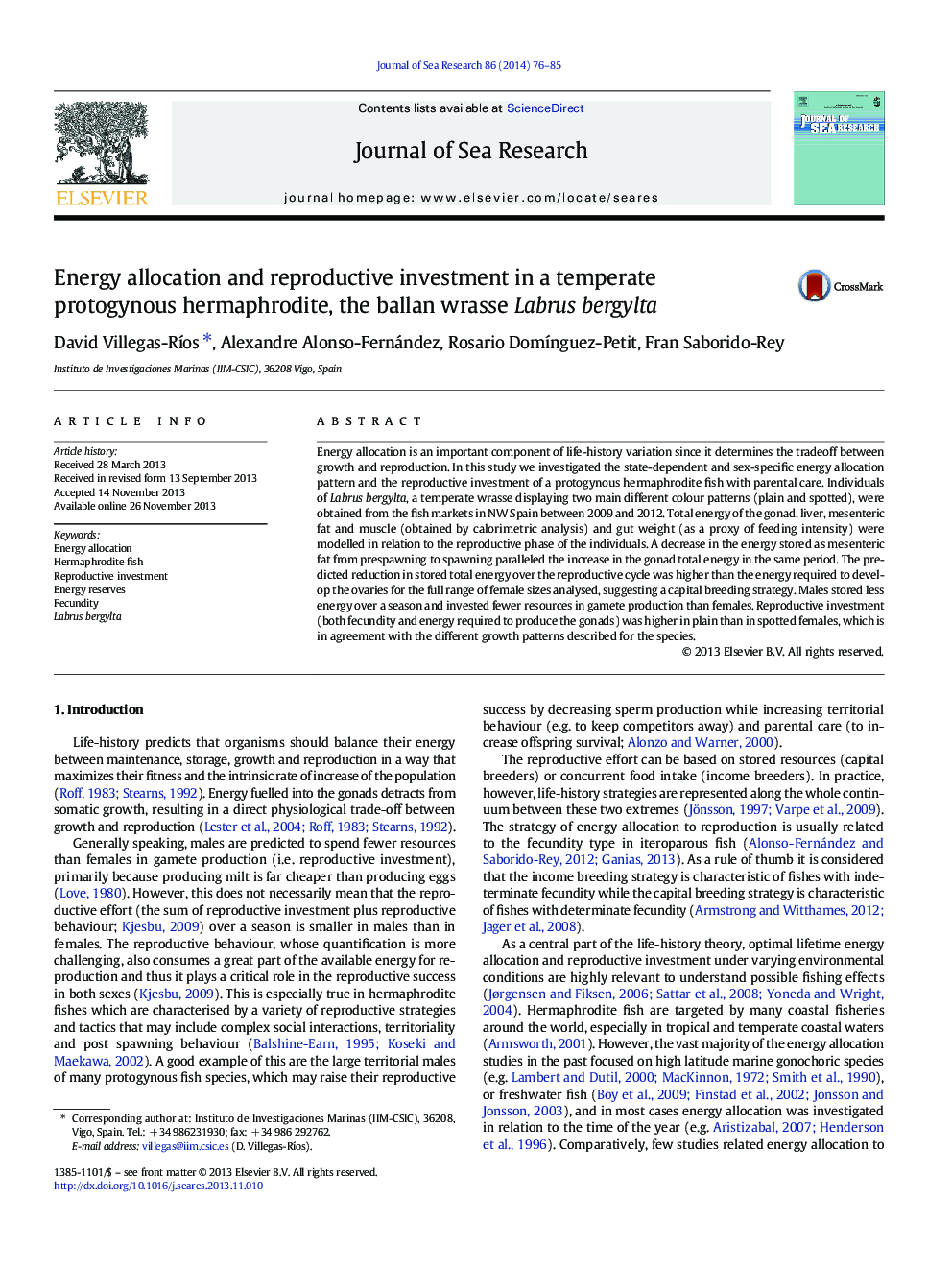| Article ID | Journal | Published Year | Pages | File Type |
|---|---|---|---|---|
| 4549840 | Journal of Sea Research | 2014 | 10 Pages |
•We modeled the energy allocation and reproductive investment of Labrus bergylta•Reproductive investment was dependent on the mesenteric fat stored before spawning•Males and females showed a different use of the stored energy related to reproduction•Spotted coloured females invested less resources in reproduction than plain ones•We discuss the results in the context of the general theory of energy allocation
Energy allocation is an important component of life-history variation since it determines the tradeoff between growth and reproduction. In this study we investigated the state-dependent and sex-specific energy allocation pattern and the reproductive investment of a protogynous hermaphrodite fish with parental care. Individuals of Labrus bergylta, a temperate wrasse displaying two main different colour patterns (plain and spotted), were obtained from the fish markets in NW Spain between 2009 and 2012. Total energy of the gonad, liver, mesenteric fat and muscle (obtained by calorimetric analysis) and gut weight (as a proxy of feeding intensity) were modelled in relation to the reproductive phase of the individuals. A decrease in the energy stored as mesenteric fat from prespawning to spawning paralleled the increase in the gonad total energy in the same period. The predicted reduction in stored total energy over the reproductive cycle was higher than the energy required to develop the ovaries for the full range of female sizes analysed, suggesting a capital breeding strategy. Males stored less energy over a season and invested fewer resources in gamete production than females. Reproductive investment (both fecundity and energy required to produce the gonads) was higher in plain than in spotted females, which is in agreement with the different growth patterns described for the species.
